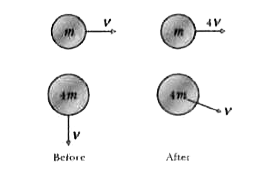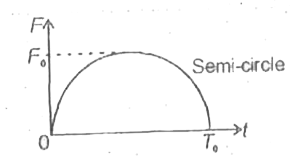A force F=BeCt acts on a particle whose mass is m and whose velocity is 0 at t = 0. It's terminal velocity is :
CmB
BmC
BCm
−BmC
The correct Answer is:B
Step by step video, text & image solution for A force F = Be^(Ct) acts on a particle whose mass is m and whose velocity is 0 at t = 0. It's terminal velocity is : by Physics experts to help you in doubts & scoring excellent marks in Class 11 exams.
Updated on:21/07/2023Topper's Solved these Questions
- NEWTONS LAWS OF MOTIONBOOK - PHYSICS GALAXY - ASHISH ARORACHAPTER - NEWTONS LAWS OF MOTIONEXERCISE - Advance MCQs
17 Videos
- NEWTONS LAWS OF MOTIONBOOK - PHYSICS GALAXY - ASHISH ARORACHAPTER - NEWTONS LAWS OF MOTIONEXERCISE - Unsolved Numerical Problem
81 Videos
- NEWTONS LAWS OF MOTIONBOOK - PHYSICS GALAXY - ASHISH ARORACHAPTER - NEWTONS LAWS OF MOTIONEXERCISE - Conceptual MCQs
23 Videos
- LINEAR MOMENTUM & ITS CONSERVATIONBOOK - PHYSICS GALAXY - ASHISH ARORACHAPTER - LINEAR MOMENTUM & ITS CONSERVATIONEXERCISE - exercise 1.3
3 Videos
- RIGID BODIES AND ROTATIONAL MOTIONBOOK - PHYSICS GALAXY - ASHISH ARORACHAPTER - RIGID BODIES AND ROTATIONAL MOTIONEXERCISE - Unsolved Numerical
63 Videos
Similar Questions
Obtain an expression for the centripetal force F acting on a particle of mass m moving with velocity v in a circle of radius r . Take dimensionless constant K = 1 .
View SolutionObtain an expression for the centripetal force F acting on a particle of mass m moving with velocity v in a circle of radius r . Take dimensionless constant K = 1 .
View Solution
Knowledge Check
A force →F=6t2ˆi+4tˆj is acting on a particle of mass 3 kg then what will be velocity of particle at t=3 second and if at t=0, particle is at rest:-
A18ˆi+6ˆjB18ˆi+12ˆjC12ˆi+6ˆjDnoneA constant force (F) is applied on a stationary particle of mass 'm'. The velocity attained by the particle in a certain displacement will be proportional to
AmB1/mC√mD1√mA constant force (F) is applied on a stationary particle of mass 'm' The velocity attained by the particle in a certain displacement will be proportional to .
AmB1/mC√mD1√m
A time varying force, F=2t is acting on a particle of mass 2kg moving along x-axis. velocity of the particle is 4m/s along negative x-axis at time t=0. Find the velocity of the particle at the end of 4s.
View SolutionThe velocity of a particle is zero at t=0
View SolutionA force →F acts on two particles of masses m and 4.0m moving at the same speed but at right angles to each other, as shown in Fig. The force acts on both the particles for a time T. Consequently, the particle of mass m moves with a velocity 4v in its original direction. (a) Find the new velocity v' of the other particle. (b) Also find the change in the kinetic energy of the system.

View SolutionThe magnitude of force acting on a particle moving along x-axis varies with time (t) as shown in figure. If at t = 0 the velocity of particle is v0, then its velocity at t=T0 will be

View SolutionA constant force (F) is applied on a stationary particle of mass 'm'. The velocity attained by the particle in a certain interval of time will be proportional to
View Solution